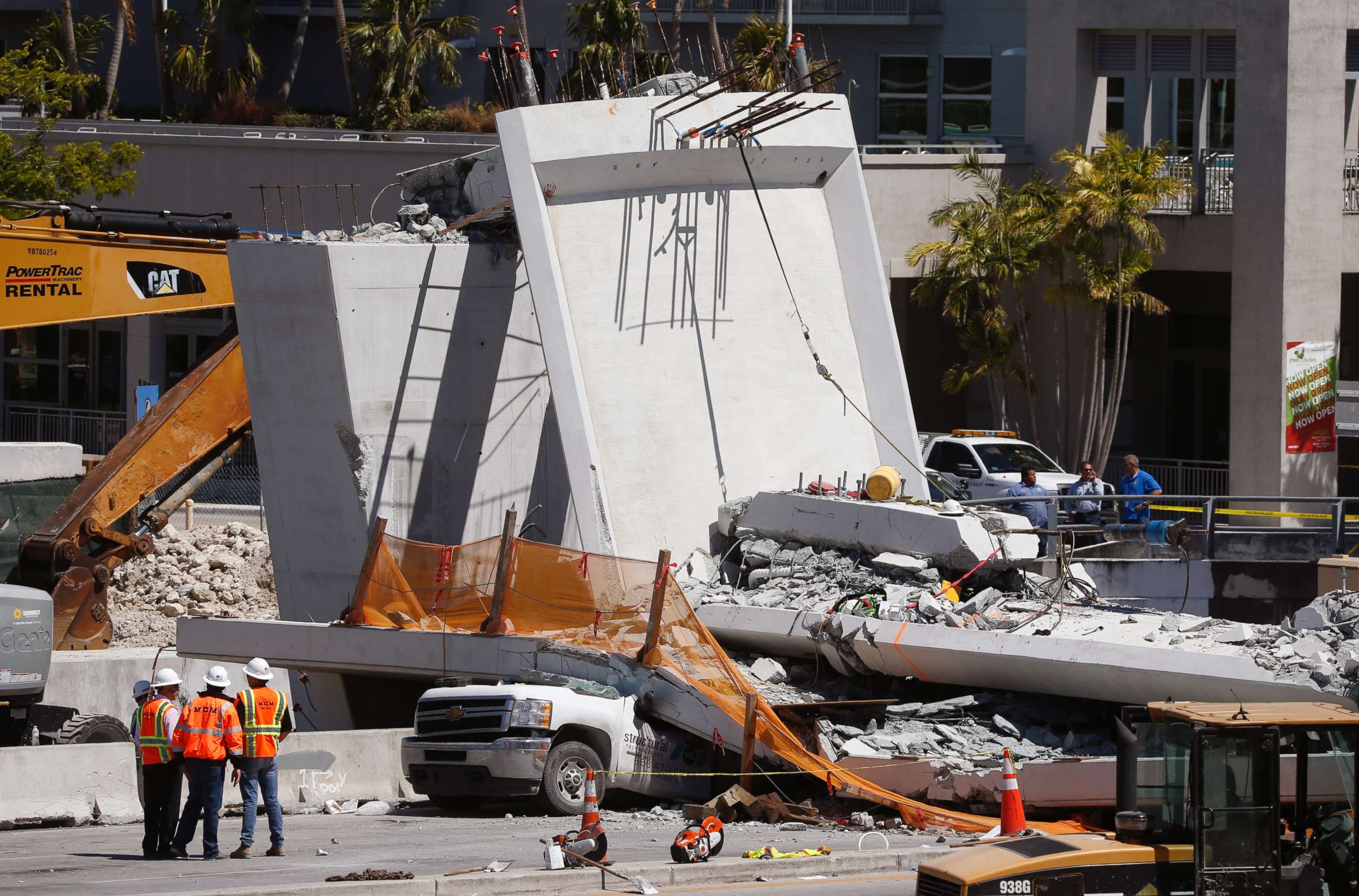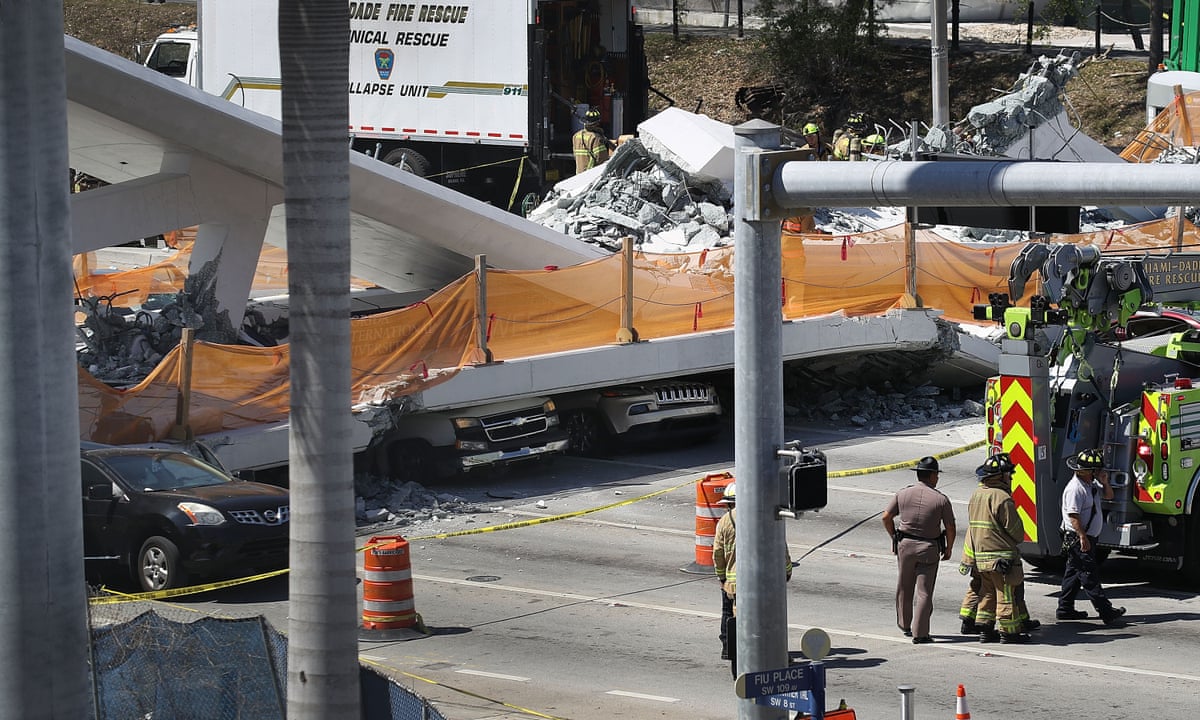A Modern Project That Ended in Tragedy
In March 2018, the Florida International University (FIU) pedestrian bridge project in Miami was meant to symbolize innovation and safety. At 53 meters long, the bridge would connect the campus to surrounding neighborhoods, offering students and residents a secure route across a busy highway.
But only days after its installation, the bridge collapsed in seconds, bringing down eight vehicles beneath and resulting in six fatalities and multiple injuries. While the loss of life was heartbreaking, the event became a case study in engineering and management failures that has reshaped how experts think about design, construction, and oversight.
The FIU bridge collapse was not simply a technical error—it was an avoidable disaster that demonstrated how organizational blind spots, overlooked warnings, and flawed decision-making can combine into catastrophe.
An Unusual and Vulnerable Design

The FIU pedestrian bridge was designed as a concrete truss, a configuration rarely seen in modern projects. Unlike traditional trusses, which feature multiple lines of support members, this design included only a single line.
Dr. Sean Brady, a forensic structural engineer, explained that such a design left the bridge vulnerable: “If one of those members breaks, there’s nowhere for the load to go.” This lack of redundancy meant that failure in a single area could trigger a total collapse.
Further compounding the risk were “cold joints”—sections where concrete was poured at different times. Instead of forming a uniform structure, these joints created weak spots. One critical detail—the instruction to “roughen” a joint between two truss members for better bonding—was left off the final construction drawings. That oversight introduced a major weakness into the bridge’s structure, one that slipped past peer review and made its way onto the construction site.
Warning Signs Before the Collapse

From the beginning, the project showed signs of stress. The main span of the bridge was cast offsite and then moved into position using a self-propelled modular transporter. During this process, engineers applied post-tensioning to manage temporary loads. Once in place, the structure appeared stable, but cracks soon began to form at critical node points.
By March 15, 2018—just 19 days after the span was set in place—engineers inspecting the bridge identified significant cracks at the junction of the 11th and 12th truss members. These were not minor cosmetic issues but large fractures that should have raised immediate alarms.
Despite this, the road beneath the bridge remained open, and the structure was not supported with additional bracing. Instead, workers attempted to re-tension the bars of a diagonal member, a move intended to restore strength but which instead increased the stress on an already compromised node.
Moments later, the bridge collapsed. The canopy and deck fractured almost instantly, confirming the vulnerability of the design and the danger of overlooking warning signs.
Investigations and Findings

The National Transportation Safety Board (NTSB) launched a detailed investigation into the collapse. Its 2019 report concluded that the tragedy was the result of a “complete lack of oversight by every single party that had responsibility to either identify the design errors or stop work once it was clear there was a massive internal failure.”
Key findings included:
-
Design underestimation: Engineers miscalculated the forces acting on the node at the failed joint.
-
Overestimation of capacity: The node’s ability to resist shear forces was assumed to be higher than it actually was.
-
Failure to account for service voids: Openings placed too close to the node further reduced its strength.
-
Ineffective peer review: Critical errors passed through checks without correction.
CROSS-UK, an independent safety reporting network, echoed these findings, emphasizing that the placement of service voids and the decision to ignore early cracking were decisive factors.
Systemic Failures Beyond Design

While technical errors played a central role, the FIU bridge collapse was also a story of management and organizational breakdowns. Cracks were identified but not acted upon. The road remained open when safety demanded closure. Engineering teams proceeded with re-tensioning despite evidence of structural distress.
The disaster underscored the dangers of relying on assumptions rather than evidence. In construction, decisions often carry immediate safety consequences. When those decisions are made without thorough consultation or caution, the risks multiply.
Lessons for Engineers and Builders
The collapse has since been studied in universities, professional forums, and industry conferences worldwide. Several key lessons have emerged:
1. Cracks Must Be Treated Seriously
Visible cracking in major structural elements should never be dismissed as cosmetic. Cracks are often indicators of deeper failures, and only trained structural engineers should assess their severity.
2. Oversight Is Non-Negotiable
Peer reviews and oversight bodies must go beyond paperwork checks. Independent engineers should evaluate the full design, assumptions, and safety margins, particularly for unconventional projects.
3. Communication Saves Lives
At FIU, engineers knew about the cracks but chose not to close the road beneath the bridge. Stronger safety protocols would have required immediate road closure until stability could be assured.
4. Match Strategy to Complexity
Complex projects demand equally sophisticated procurement, contracting, and project management. Teams must have the skills and resources to handle unconventional designs, otherwise risks can slip through unnoticed.
Changes in Oversight and Industry Practice

In the aftermath, the NTSB recommended changes to bridge construction oversight across the United States. Among them:
-
Stronger state-level supervision of complex bridge projects.
-
Mandatory closure of roads when structural cracks appear beyond accepted tolerances.
-
More stringent peer review standards for unusual designs.
These recommendations align with global best practices, reminding engineers that safety decisions should always err on the side of caution.
A Replacement Bridge with Conventional Design
Construction of a replacement bridge at FIU has already begun, this time with a more conventional design. The new structure emphasizes redundancy and proven engineering techniques, a deliberate move away from the experimental truss concept that failed.
For students and residents, the new bridge will eventually provide the safe passage the original was meant to offer. For engineers, the replacement is a reminder of the balance between innovation and responsibility.
A Cautionary Tale for the Future

The FIU pedestrian bridge collapse stands as a stark warning to the construction industry. Innovation is important, but it must never outpace safety. Bold designs must be backed by rigorous analysis, transparent oversight, and a culture that values precaution over speed or cost savings.
As Dr. Brady remarked, “This was an avoidable tragedy.” The fact that it occurred in spite of clear warning signs suggests that the biggest danger in engineering is not only technical error but complacency.
Conclusion
The collapse of the Florida International University pedestrian bridge was a painful moment for Miami and for the families of those affected. Yet it has also become one of the most studied engineering failures of recent decades, shaping how future bridges will be designed, reviewed, and built.
By treating the event as a case study rather than an isolated failure, the construction industry has the opportunity to prevent similar tragedies. Every bridge, every road, and every public structure must carry not only the weight of vehicles and people but also the weight of trust. That trust is earned through diligence, oversight, and an unwavering commitment to safety.



